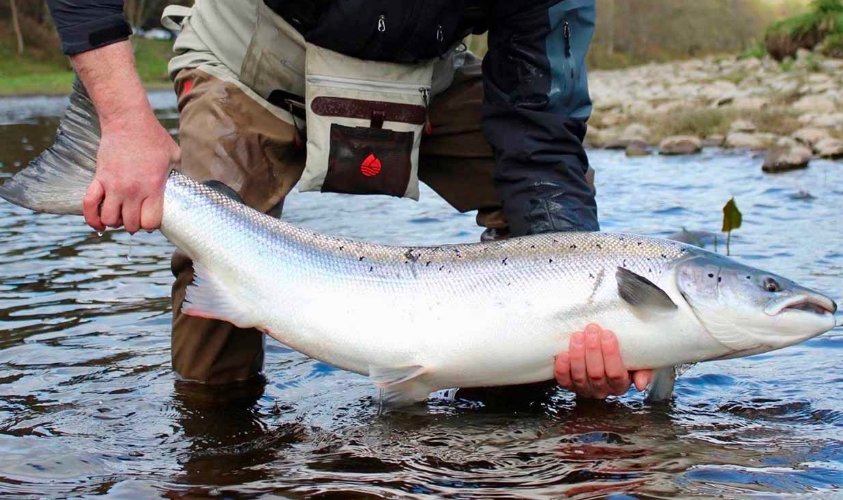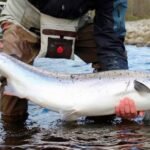Scotland has rolled out a fresh £230,000 conservation fund to boost wild salmon numbers. This move, led by Salmon Scotland, opens applications for 2026 projects that aim to fix rivers and protect these key fish from sharp drops in population.
The fund targets groups working on river catchments across the country. It focuses on habitat fixes, spawning ground safeguards, and better survival for young fish amid growing threats like climate change and habitat loss.
Fund Aims and Key Focus Areas
This new fund builds on a five-year pledge of £1.5 million from the salmon farming industry. It seeks to tackle the long-term fall in wild salmon and sea trout stocks through hands-on restoration work.
Groups can apply for cash to support projects that overlap with both farmed and wild salmon zones. Priority goes to efforts that strengthen river banks, clear barriers to fish movement, and boost juvenile fish numbers.
The push comes at a critical time. Recent government checks show only 17 percent of salmon stocks in Scotland hold good conservation status. Marine survival rates have dipped to between one and five percent, down from historical highs.
Experts point to multiple causes. Warmer waters, invasive plants and animals, more predators, and blocked paths all play a role in the decline.

Reasons Behind the Salmon Crisis
Wild salmon face tough odds in today’s changing environment. Habitat loss from development and farming has hurt river health over decades.
Rising temperatures in rivers and seas add stress, making it harder for fish to thrive. Invasive species crowd out natives, while dams and weirs block migration routes needed for spawning.
Data from recent studies highlights the scale. In the UK, salmon returns to rivers have dropped by up to 70 percent in some areas since the 1980s. Scotland’s rivers, once teeming with these fish, now see far fewer adults making it back from the ocean.
Other factors include pollution and overfishing in the past. Conservation groups warn that without quick action, some populations could vanish within 20 years.
To show the key threats, here is a simple table of main issues affecting wild salmon:
| Threat | Impact | Example in Scotland |
|---|---|---|
| Habitat Loss | Reduces spawning areas | Eroded riverbanks in Argyll |
| Warmer Waters | Lowers survival rates | Increased sea temperatures |
| Barriers | Blocks migration | Dams in Western Isles |
| Invasive Species | Competes for resources | Pink salmon in northern rivers |
| Predation | Eats young fish | Seals and birds near coasts |
This table draws from ongoing research and shows why targeted fixes matter.
Success Stories from Past Funding
The wild fisheries fund started in 2021 and has already poured about £705,000 into projects. These efforts have made real changes on the ground.
For instance, riverbank work in Argyll has stabilized soils and cut erosion. In the Western Isles, dam fixes have opened paths for fish to reach upstream spots.
Other wins include gene banks in Lochaber and Loch Fyne to preserve strong salmon traits. Ayrshire saw habitat tweaks that helped young fish survive better.
One standout project removed weirs from a river in East Renfrewshire. This let salmon return to stretches unused for 170 years.
Tree planting along rivers has also helped. It creates shade, cools water, and stops soil from washing away. Such steps tie into broader efforts like reforesting highlands for healthier waterways.
How Groups Can Apply
Applications for the 2026 fund are open now and close on March 31. River catchment organizations should submit plans that show clear benefits for wild salmon.
To apply, groups need to outline project goals, costs, and expected outcomes. Focus on areas where farmed and wild interests meet for the best shot at funding.
Here are some tips for strong applications:
- Highlight community involvement to show local buy-in.
- Include data on current river conditions and how the project will improve them.
- Partner with experts for technical support.
- Tie the work to bigger goals like climate resilience.
Salmon Scotland offers guidance on their website to help with the process. Successful applicants get funds to start work in the coming year.
Voices from the Field
Long-time fishery manager Jon Gibb coordinates the fund. He stresses the role of local knowledge in turning things around.
Gibb notes that community projects build evidence on what helps young fish most. He sees hope in the drive of people working directly on rivers.
Tavish Scott, head of Salmon Scotland, calls wild salmon a core part of Scotland’s heritage. He urges more action against climate and habitat woes.
Other voices echo this. Conservation charities like WildFish raise concerns but welcome industry support. They push for broader changes beyond funding.
Recent talks at events like COP26 highlighted nature funds in Scotland. These tie into global pushes for biodiversity, with salmon as a key species.
Looking Ahead to Recovery
This fund could spark a turnaround for Scotland’s wild salmon. By fixing rivers and cutting threats, it aims to lift survival rates and rebuild stocks.
Tied to trends like river re-meandering, which has brought salmon back to old haunts fast, the effort fits a wave of restoration work. Projects in places like Glen Clova show how naturalizing streams aids fish and wildlife.
Experts predict that with steady investment, populations might stabilize by 2030. But success depends on teamwork across sectors.
What do you think about efforts to save wild salmon? Share this article with friends who care about nature, and drop a comment below on your ideas for river protection.


















